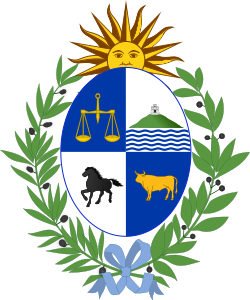Coat_of_arms_of_Uruguay
Coat of arms of Uruguay
Coat of arms of Uruguay
The coat of arms of Uruguay or Uruguayan shield (Spanish: Escudo de Armas del Estado) was first adopted by law on March 19, 1829, and later on had some minor modification in 1906 and 1908. It was supposedly designed by Juan Manuel Besnes Irigoyen (1788–1865), based on the coat of arms of Argentina.

